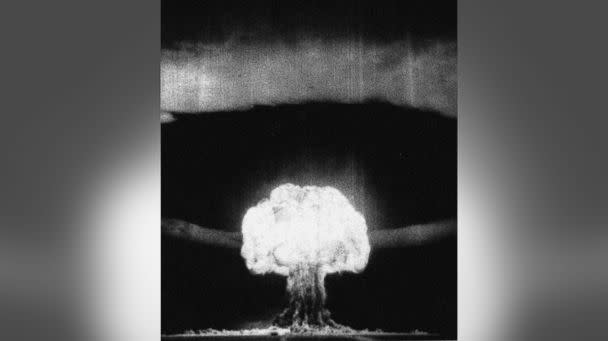
This article is more than
8 year oldWhat is a hydrogen bomb? A look at the latest potential threat from North Korea
North Korea's announcement on Sunday that it has successfully tested a hydrogen bomb meant to be loaded onto an intercontinental ballistic missile has raised alarm bells across the world, in part because of the weapon's destructive power.
Here's a look at what a hydrogen bomb is, and what exactly it can do:
Stronger than the atomic bombs used during WWII
Los Alamos National Laboratory (LANL), a federally funded research and development center focused on national security issues, suggests that thermonuclear weapons, including so-called hydrogen bombs, are more powerful than atomic weapons, like the ones the United States used on Japan during World War II, killing hundreds of thousandsof people.

Atomic bombs produce energy through "fission, or the splitting of heavy nuclei into smaller units, releasing energy," according to LANL.
Thermonuclear weapons use a fission bomb to start "a fusion reaction where light nuclei, with few protons and neutrons, join together and release energy," according to LANL. This represents the same reaction that powers stars, LANL notes.
When a newsreader for North Korean state-run television announced today's test, she called it a "complete success," adding that the "two-stage thermonuclear weapon" had "unprecedented" strength.
Mankind tested hydrogen bombs, but not used them in war

The U.S. first ran a test of its own hydrogen bomb at Eniwetok in the Marshall Islands on November 1, 1952, during a mission called Operation Ivy.
"The Atomic Energy Commission announced tonight ‘satisfactory’ experiments in hydrogen weapon research … In a three-paragraph announcement, the Commission did not go so far as to state that a full-scale hydrogen bomb had been detonated, but it did say ‘experiments contributing’ to hydrogen bomb research had been completed,” the New York Times reported at the time.
Footage of the test shows the haunting and familiar "mushroom cloud" of smoke billowing outward into the sky in repeated waves.
The test represented the next stage in development for weaponry, and an escalation in potential damage: Nuclearweaponarchive.org, a website that tracks the history of atomic explosions, suggests that a blast created during Operation Ivy was "considerably more powerful than all the high explosives used in two World Wars put together."
A summary produced by The History Channel suggests that the blast is "approximately 1,000 times more powerful than conventional nuclear devices" like the atomic bomb.
Responding to the threat posed by the U.S., the U.S.S.R. tested "Joe 4," a thermonuclear device, in August of 1953.




